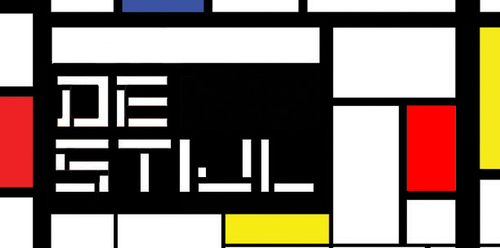
This year de Stijl turns 100! A glorious year for primary color fetishists. Well... if you live in the Netherlands that is. The art movement never got much momentum outside of the country, apart from Piet Mondrian being kind of a big deal in 1940s' Manhattan. This unfortunately means the red-yellow-blue festivities are basically limited to the lowlands.

How it all began.
Artist, writer, poet and architect Theo van Doesburg was the big mastermind behind de Stijl. In 1917, Theo launched de Stijl magazine. The magazine was Theo's way of recruiting new artists, designers, and architects for his new artistic collective, conveniently also called "de Stijl."
After WWI, many people we're like "out with the old, in with the new." Theo was looking for new and innovative stuff and de Stijl was his means. I mean, who cares about Art Deco & Art Nouveau right? Snoozefest! Instead, Theo was influenced by the systematic and abstract aesthetics of machines and the new industrial age, DaDa's anti-elitist mentality, and the early works of architect Frank Lloyd Wright.
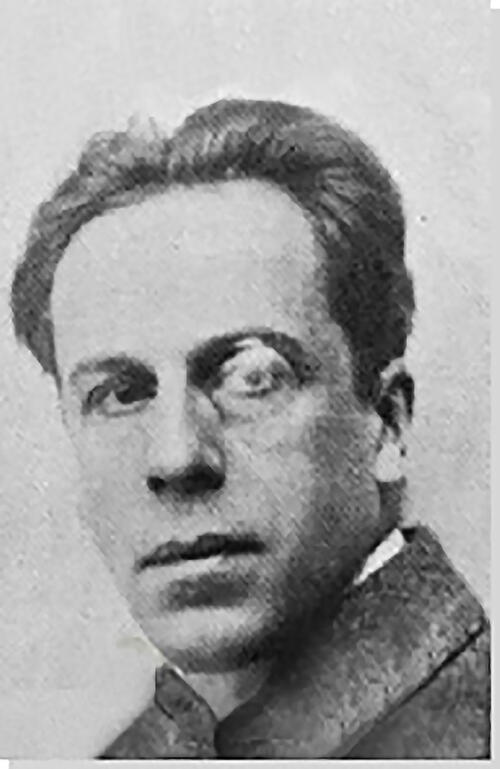
Theo van Doesburg, rocking his monocle.
Theo's hard work paid off and he found some like minded people! Among the most famous are these guys: Painter, designer, and ceramicist Bart van der Leck, painter Piet Mondrian, furniture designer and architect Gerrit Rietveld, Hungarian painter and designer Vilmos Huszár and architect J.J.P. Oud.
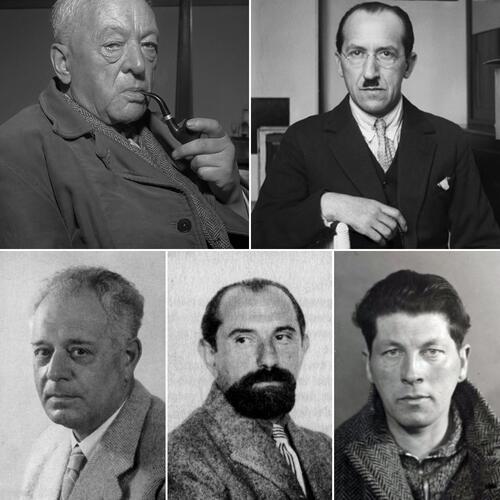
Clockwise: Bart van der Leck - Piet Mondrian - Gerrit Rietveld - Vilmos Huszár -J.J.P. Oud
But what does de Stijl stand for?
De Stijl promoted a style of art based on a strict geometry of horizontals and verticals - cuz screw those ditzy floral patterns basic bitches loved. Who needs to recognize faces or even shapes anyway! Art by de Stijl was the exact opposite of Manet & Courbet's realism, a.k.a. complete and utter abstraction of form and color.
Besides art, the guys were also all about utopian ideas and spiritual stuff. In the first few issues of de Stijl magazine the boys started to use the term "neo-plasticism." Piet Mondrian published his long essay Neo-Plasticism in Pictorial Art in which he explained what the hell this neo-plasticism was supposed to mean:
As a pure representation of the human mind, art will express itself in an aesthetically purified, that is to say, abstract form. The new plastic idea cannot therefore, take the form of a natural or concrete representation – this new plastic idea will ignore the particulars of appearance, that is to say, natural form and colour. On the contrary it should find its expression in the abstraction of form and colour, that is to say, in the straight line and the clearly defined primary colour.

Say what?
Mondrian called it the "new plastic art," or even better "new art" an ideal, abstract art form he felt that was suited to the modern era. So, in a nutshell: straight lines, either horizontal or vertical. Plus primary colors, black, grey, and white. Easy right? Yeah, but still, let me give you some famous examples just to be sure:
Rietveld-Schröder huis
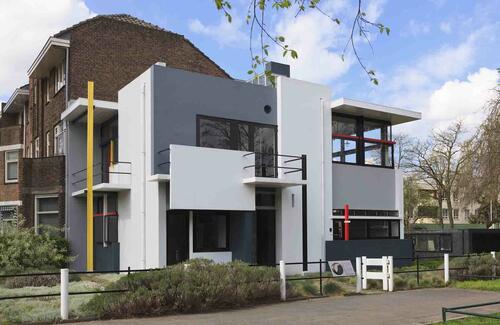
The guys basically tried to transform the world through their art. Nothing new there, except for the fact that they took "unifying art and life" to a whole different level. The Rietveld-Schröder house in Utrecht (NL) is designed by Gerrit Rietveld, for miss Mrs. Truus Schröder-Schräder and her three children. Truus was a Dutch socialite and trained pharmacist, who also happened to be buddies with some cool avant-garde artists. At first glance all you see is awkward corners, oddly placed windows, and useless decorative elements, but inside it's filled with nifty tricks to create an "active" living space. The stuff Rietveld invented would come in handy inside every single one of those overpriced 300 sq. ft. San Francisco studios. Think stuff like flexible walls & floor plans, and huge windows which not only make the rooms look bigger, they also make you feel one with nature. Until they decide to build a condo complex right next to your window of course.
I passed by this house at least once a week on my way to the University, for like 6 years in a row, and was rudely never invited inside. Luckily, my fellow alumni Mathijs did, he even made a cool video. It's a must-watch if you're curious how Mrs. Schröder had to transform her bedroom every. single. freaking. morning.
(no worries folks, subtitles!)
Composition C (No.III) with Red, Yellow and Blue
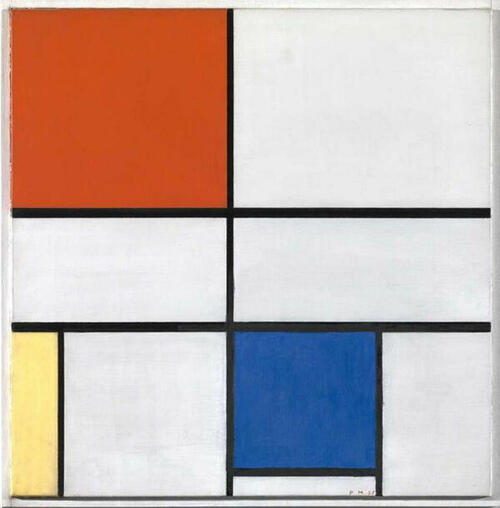
Composition C (No.III) with Red, Yellow and Blue by Piet Mondrian at Tate Britain.
A classic Mondrian! In his early days, Piet used to paint stuff like windmills, trees and churches, but everyone knows him because of his geometric compositions. These compositions are the true embodiment of neo-plasticism. The straight lines, the primary colors... you can say a lot about this painting (well, not really...) but you can't say it has not completely reduced everything to the essentials of form and color!
De Stijl had a major influence on Bauhaus (the German art-school, not the band). Just like de Stijl, Bauhaus was founded with the idea of creating a "total" work of art (you might have heard of the term Gesamtkunstwerk?), and to unite life and art. Several members of de Stijl taught at the Bauhaus, most importantly van Doesburg. After Theo van Doesburg's death in 1931, de Stijl lost its leader, and soon after the de Stijl philosophy went into obscurity. But the look still lives on in pop-culture!


Katy Perry danced around inside some sort of Rietveld house, wearing a Mondrian 2 piece in her "This Is How We Do" music video.
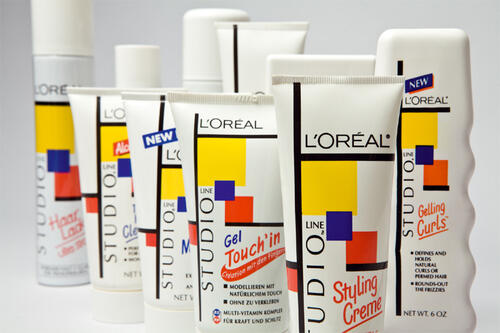
Remember L'Oreal's super 90s packaging? I know I do!

The Container store sells these awesome Mondrian inspired boxes. Which, by the way, we SO need at Sartle HQ! ATTN Lauren.
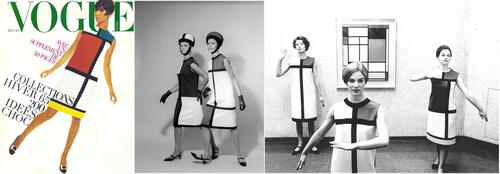
Yves Saint Laurent and the "Robe Mondrian" of 1965
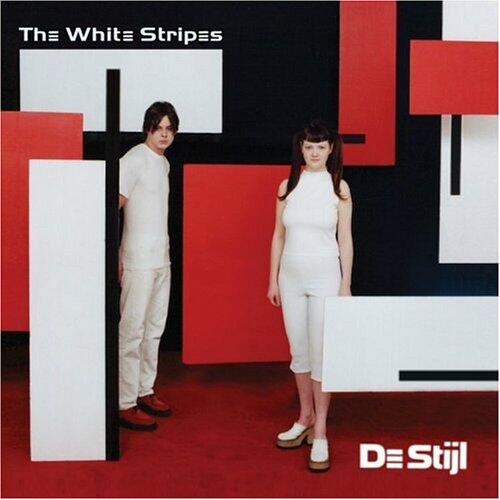
The White Stripes' 2000 album was even called "De Stijl" because Jack White is a big fan of Rietveld. Meg and Jack dedicated the album to him, and to blues/ragtime musician Blind Willie McTell.
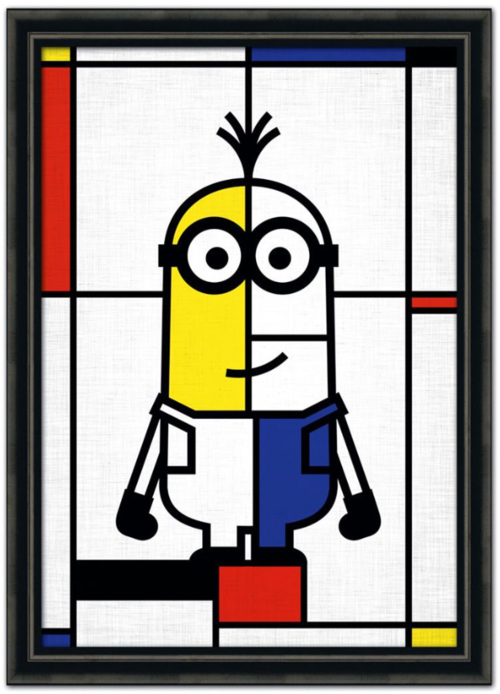
And the list goes on and on and on.... even the minions are doing it!
Let us know if you spotted de Stijl somewhere near you!
by: Silke










read your article, very nice! thanks a lot!! i will use it to inspire some very young kids.